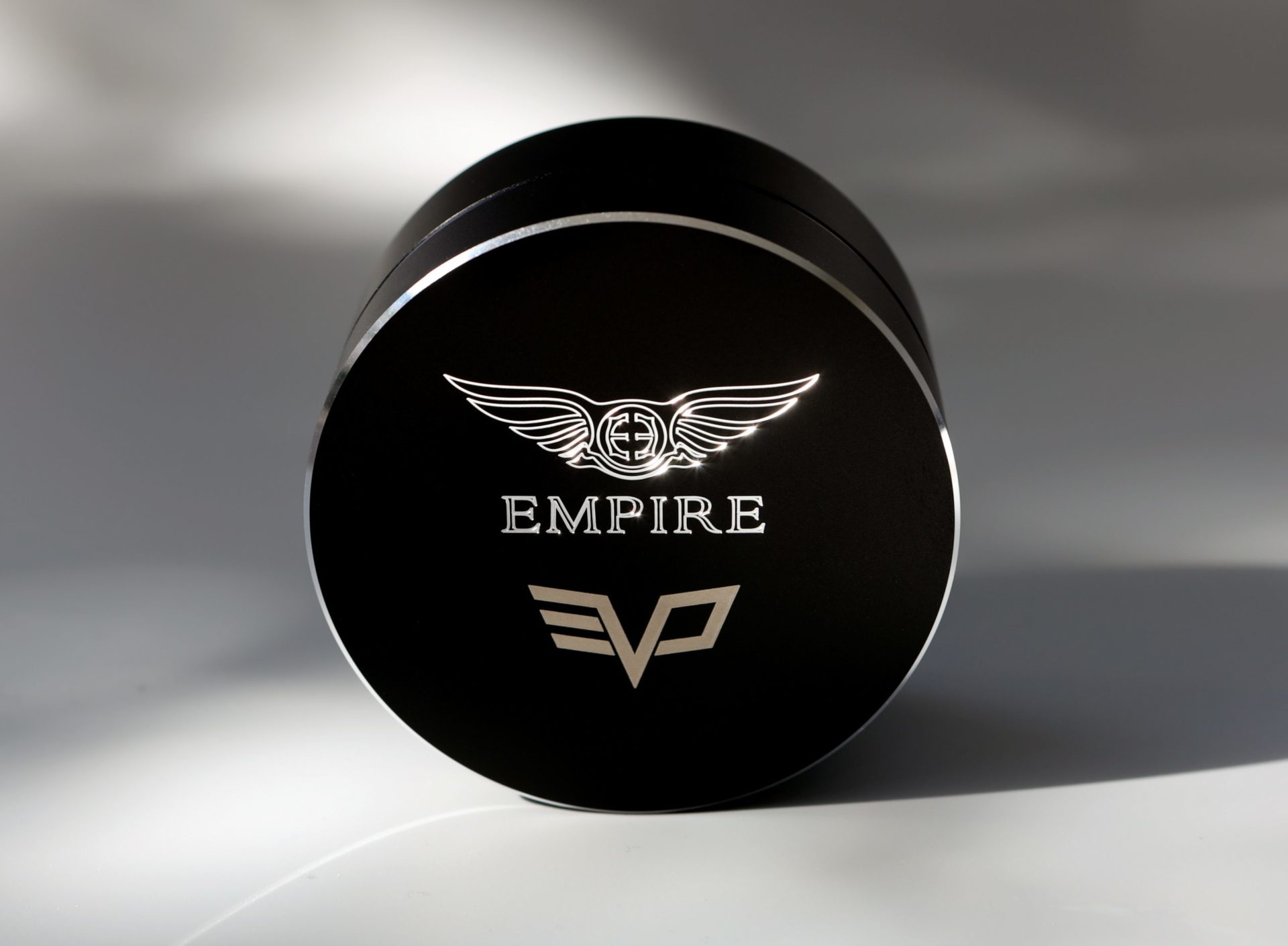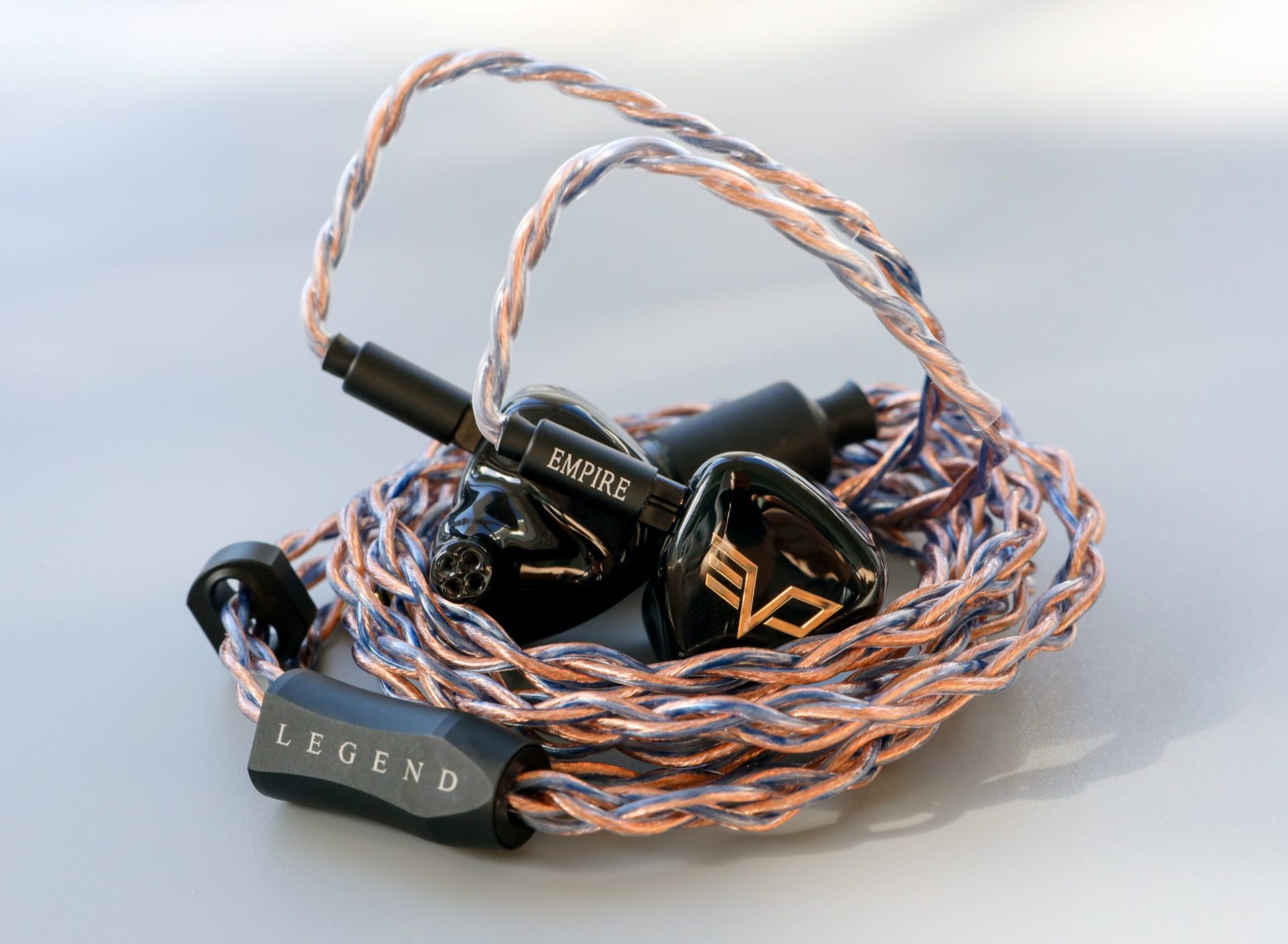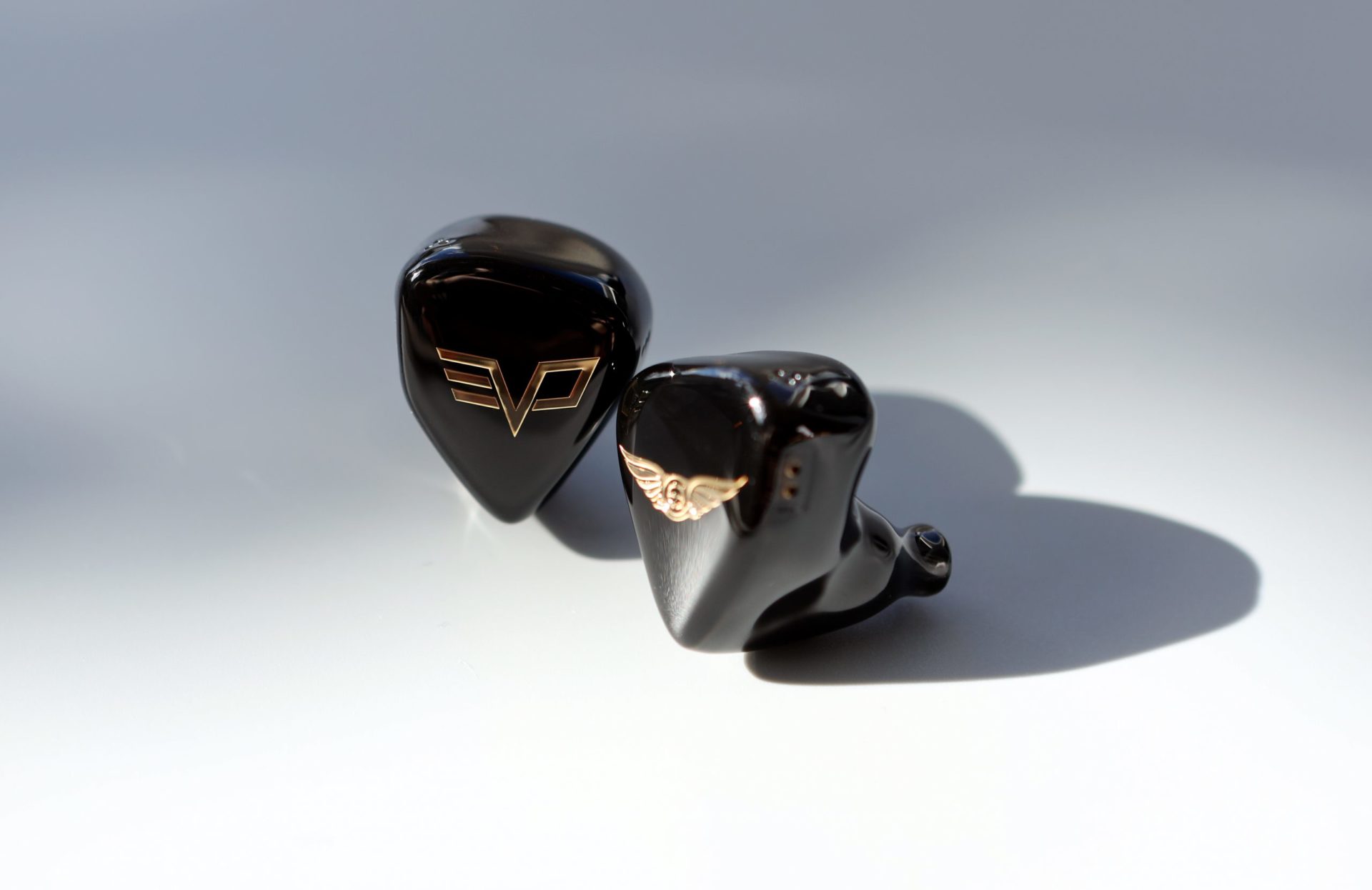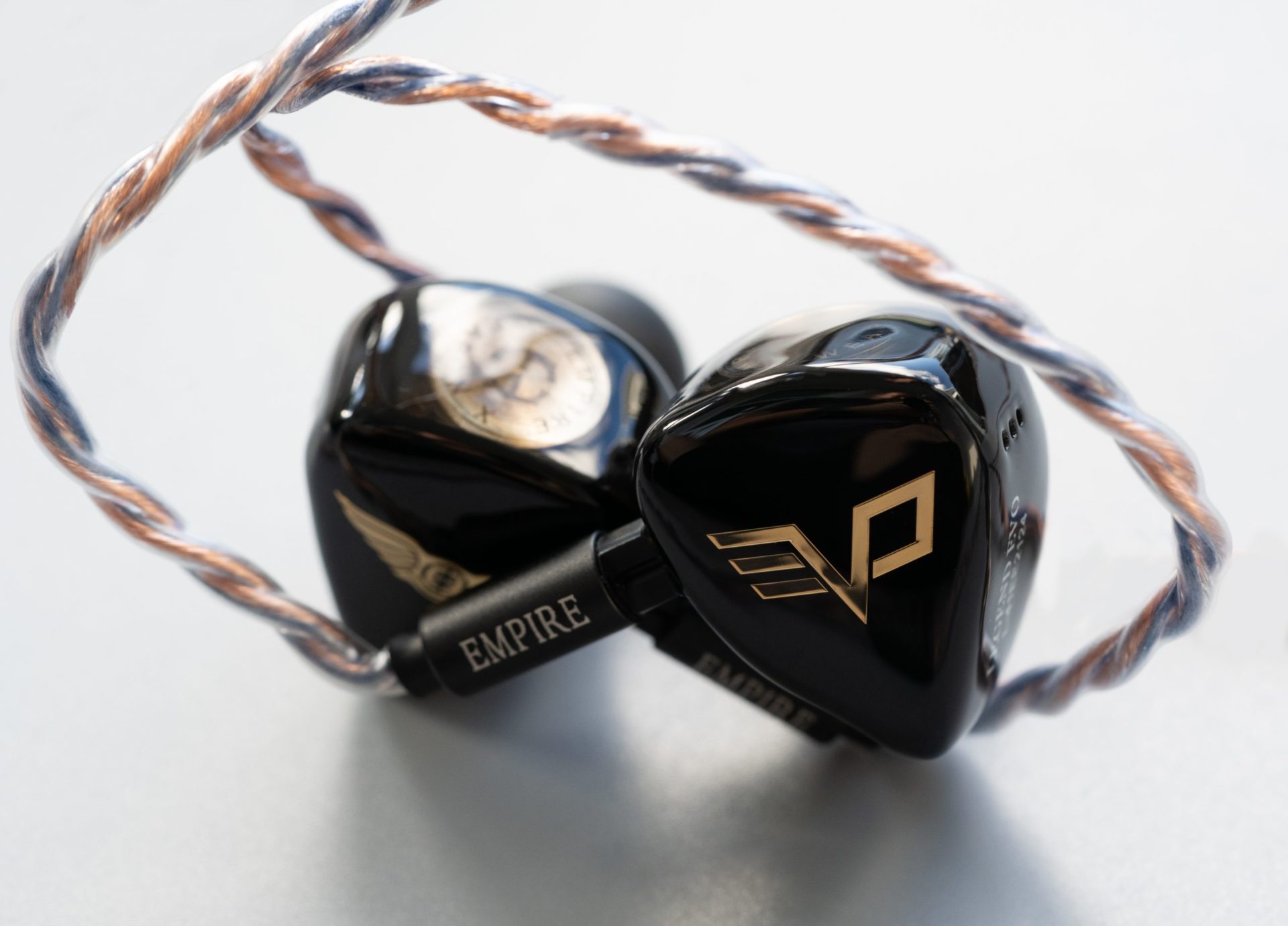Preamble…
I was provided early access to the Legend EVO by Empire Ears in exchange for my honest opinion. This in no way influences my assessment and I have not been compensated or promised anything from Empire Ears in exchange for a positive review.
If you’d like to purchase the Legend EVO, I’d highly recommend checking out Bloom Audio, here! They also have their own stellar published review of the Legend EVO.

Specifications…
Legend EVO:
- Dual W9+ Subwoofers
- Five Precision Balanced Armatures
- Weapon X Bone Conduction Ultra Driver
- 9-Way synX Crossover Network
- Dual Conduction Architecture
- ARC Resonance Mitigation Technology
- Impedance: 4.5 Ohms @ 1kHz
- Frequency Response: 5Hz-35kHz
- Sensitivity: 103dB @ 1kHz, 1mW
GENESIS CABLE – EMPIRE X PW AUDIO:
- 24AWG Ultra-Pure OCC Copper
- Quad Conductor, Polypropylene Reinforced Core
- Insulated UV-Resistant Polyvinyl Chloride Sheath
- 4 Balanced Pentaconn Termination
In the box…
The first 400 launch edition units will come with your standard Empire Ears affair Final Audio Type E tips, Genesis cable, paperwork, cleaning cloth and cleaning tool. Unique to the launch edition units only will be a gorgeous, handcrafted leather puck case, as pictured below.
 (Launch edition hand crafted leather carrying case. Limited to first 400 units sold.)
(Launch edition hand crafted leather carrying case. Limited to first 400 units sold.)
 (The new Empire Ears mesh drawstring IEM pouch shown with the Launch Edition leather carrying case.)
(The new Empire Ears mesh drawstring IEM pouch shown with the Launch Edition leather carrying case.)
The units sold after the launch edition will come with the items mentioned above minus the handcrafted leather case. Instead, the robust metal pandora case will be included in its place. A unique and welcome addition this time around for all Legend EVO retail units will be the new mesh IEM drawstring divider. I can’t even tell you how handy these things come, especially when you want your gear to remain pristine.
 (The Legend EVO standard retail pandora case with etched EVO design included with standard retail units after the 400 launch edition units are sold.)
(The Legend EVO standard retail pandora case with etched EVO design included with standard retail units after the 400 launch edition units are sold.)
Let’s start with the meh…
My only Critique comes by way of the cable oddly enough. I am very familiar with Empire Ears IEM shell fit and finish which have yet to disappoint me. Cables have typically been “thrown down” cables just to get you up and running without jacking up the price of entry. During its announcement, the EVO was introduced with a 4.4mm PW Audio Genesis cable that looked as if it was revolutionary and on par with the stormbreaker that is included with Empire Ears very own, Odin. Then I received it… The cable isn’t terrible, but it was much less impressive in person. The ergonomics are average, and nothing really jumped out at me that felt premium. It does sound great though, I just wish it was a bit more substantial elsewhere.
Some objective things others can look out for would be based upon fit, cost and tolerance to bass, mids or treble as we all have our own sensitivities that no one can justify for us. Also, Empire Ears tunes for instrumental realism… instruments can be very loud, so listen at a reasonable volume. Keep in mind, I am only one data point and I always recommend a first-hand experience to qualify your own biases for the aforementioned.

Now on to the nerdy subjective sound stuff…
Test tracks:
Rock Candy Funk Party – Groove is King
Hi-Lo – Zeus
Breakdown of Sanity – Story of a Stranger
Issues – Drink about it
PVRIS – Use Me
Soundgarden – Fell on Black Days
The Weeknd – Prisoner
After the Burial – Behold the Crown
Moneybagg Yo – Rookie of the Year
Wunna – Feigning
Animals as Leaders – Physical Education
Tool – Stinkfist
Chris Stapleton – Tennessee Whiskey
Becky Hill – Gecko
Sources: LPTG Ti and L&P W2
Bass: The EVO is unlike anything I have ever heard regarding its approach and execution throughout the entire bass frequency response range. It starts with unbelievable detail retrieval and projection from incredibly low bass lines that in most cases aren’t even discernable. We’re talking like 20hz here. The EVO extracts these typically imperceivable or empty-sounding driver excursions and mimics the likes of a large bandpass or ported woofer enclosure. Not only are they able to be heard but they portray a sense of power and control that is mind-bending for any monitor, let alone one that fits in your ear. For reference, if you wanted to reproduce these frequencies in the same manner at a larger scale, you would need an abundance of space for an acoustic enclosure, a very stout subwoofer, and amplification. When you move up to your normal sub-bass ranges, the EVO dominates this area with a thunderous and articulate wallop. This would lead most to believe that it must crowd out or drown the remaining sound profile, and that’s where they’d be wrong. The bass on the EVO images. Yes, you read that correctly. It remains respectfully in place and approaches your senses from its intended location. It’s powerful, dynamic, and demonstrates layering that removes it from harming or distorting higher frequencies and their respective details. This allows the end-user to avoid sacrificing their love for bass and detail retrieval at the same time, which has often not been the case. This sub-bass layering and control also assists another game-changing dynamic: mid-bass punch. The mid-bass punch is layered away from the rumble of the sub-bass, which is awe-inspiring once it all comes together. You enjoy can a low rolling sub bassline that incorporates a sophisticated or powerful mid-bass textured impact without any merging or distorting over one another. In and of itself, the mid-bass punch, amongst the rest of the bass, is class leading. It punches with impeccable control and speed, there’s no lagging or blooming as it thumps along; it’s always tight and detailed. It’s present when it’s called upon and remains reserved where intended. The EVO isn’t simply ‘elevated bass’, it’s an accurate reproduction of bass characteristics at a technical level that is currently class leading. Typically, we self-proclaimed audiophiles seek neutral tuning to remove the element of powerful bass having its way with the mid-range and treble. Not the case here, it’s all articulate, distinguishable, and powerful while separated from the remaining signature. The addition of the Weapon X and its conductive properties add an attack, decay, texture, and transient advantage (technicalities) that no dynamic driver array on the market can rival. It’s not a gimmick and that is quickly realized if you compare the bass performance to the defacto basshead monitor in which the EVO is an EVO-lution to, the Legend X. The EVO has compartmentalization of its bass display while the LX just has bass everywhere. Don’t get me wrong though, despite the larger flooding of bass throughout the LX’s signature, it’s quite an impressive technical monitor. Purely going by bass performance, the EVO has more controlled and separated bass with a noticeable projection advantage, likely due to the Weapon X conduction. This may seem long-winded but, in all fairness, the bass of the EVO could fully justify its own review entirely.
 (Peeking through the top is the all-new Empire Ears Weapon X. This is a built from the ground up bone conduction driver constructed from a nickel plated SPCC housing and combined with a rare earth N52 neodymium magnet to ensure resistance to demagnetization.)
(Peeking through the top is the all-new Empire Ears Weapon X. This is a built from the ground up bone conduction driver constructed from a nickel plated SPCC housing and combined with a rare earth N52 neodymium magnet to ensure resistance to demagnetization.)
Mid-Range: The mid-range is where things get interesting compared to the original Legend X but in a positive way. One well-known fact regarding the LX is that it performed poorly in the mid-range when paired with thick or warmer sources. This was likely due to just too much mid-bass and lower mid-range density playing tug of war. This inevitably moves on to drag down much of the mid to upper mid dynamics and you are left with boomy, non-dynamic mud. The EVO remedies this thanks to its overall bass separation and improved mid-range resolution. The lower mid-range carries a healthy amount of body in note weight without going too far in either direction (analytical or warm). 300-2k Hz sounds accurate with the harmonics of almost any instrument. 500 to 1k Hz isn’t honky or shouty sounding, it produces a natural note weight that exercises a balanced clarity. The lower to mid mid-range has a linear elevation up into the upper mid-range that avoids any peaky shrillness or sibilance. From 2k-4k Hz, there’s a distinct elevation over the Legend X, but this does not portray that of Odin’s upper-mid forwardness; rather, adding clarity to the EVO in this region. I suspect this is the result of a slower, more gradual, or linear rise from 500 Hz to 2K Hz whereas the Odin accelerates this elevation, as I hear it. Another interesting thing about the mid-range is the width, which produces a reverberation effect in certain tracks. This reverb not only can seem like echoes bouncing between the bass and treble, but it can also diffuse vocal subtleties out in front of your head. Imaging of the EVO is also well-executed. Its stereo separation and pinpoint accuracy placing of sounds throughout a track are the best I have heard from anything Empire Ears has produced. The Odin has precise imaging as well, but it does not share the same width as the EVO. This perceived width naturally offers more psychoacoustic space to arrange these sounds, thus adding just that little bit more reality to the experience. The overall mid-range tonality is natural with more slightly more body than transparency but there is a very close balance. Chesty, soulful male voices such as Chris Stapleton, sound dynamic and enveloping with accurate tonal weight or density. I am not picking up on any injected artificial warmth. On the other side of the spectrum, Female’s voices such as Becky Hill who can sound chesty but quickly clear up as they modulate to their upper registers, have accurate transitional tonality and no vocal vibrato detail is lacking. Texture in the exhalation to achieve a pitch or note is perceivable and adds a pleasant air (no pun intended) to vocal presence. Lastly, there is a slight rounding to the higher vocal registers which I assume is to prevent any aggressive peaks but may also slightly blunt maximum detail retrieval. Considering the EVO was not designed with mixing and mastering in mind, this mild sacrifice makes sense.

Treble: I can sum the EVO treble up in two words, dense and natural. I will have to elaborate but it is that simple. The single biggest factor that achieves this is the linear transition of the mid-range into the lower treble. It provides a coherence that blends the transition seamlessly. I would not call the lower treble overly reserved, but I would not consider it in your face either. It has a natural weight and presence to it without any artificial splash or gritty metallic crunch sometimes present to force perceived detail retrieval. The Weapon X adds an almost full-size tweeter density to the lower treble that can absolutely be felt, especially in heavier cymbal crashes. Transient attack and decay are crisp and clean also contributing to the natural accuracy of the lower treble. The upper treble does just enough to add that extension to the higher frequencies and as certain instrumental decay transitions into and beyond the upper treble region. Again, nothing artificial here, I am only picking up on sufficiently detailed, clear, and accurate reproduction. Relative to the Legend X, the EVO treble comes across as more tonally accurate and with more body in this region. The million-dollar question is does it image just like the mid-range? Yes, it certainly does, and I would argue to say the Weapon X adds height to the soundstage via the treble regions imaging. The higher notes appear and dissipate around your head with an infinite blackness in between. Stretching high and low in the treble while the mid-range is pulling wide left to right creates this oval shape to the sound stage. The EVO obtains its holographic nature from these aspects which I will touch on later in this review.

How it compares to other heavy hitters…
Empire Ears Legend X: I figure we can start here, where it all began for the EVO, its predecessor. The LX, for brevity, was hands down the bass king and somewhat of an unsuspecting technical marvel. Many gave it a 5-minute audition and discarded it completely while the rest of us gave it a chance and learned what it was all about. It’s a chameleon with an L shaped sound that can quickly present as much more balanced given the source pairing, tips, and cable. The EVO comes in and off the bat keeps the bass elevated but refines it thanks to the Weapon X. The extra speed and control the EVO displays in the bass region over the LX is immediately apparent. LX can bloom bass and the EVO does not, yet the bass is just as powerful and more textured. The EVO extracts more detail out of the mid-range and boosts the upper mid-range which makes the LX sound veiled in an A/B comparison. The EVO has just a bit more extension in the treble and the tone is more accurate and natural than that of the LX. The EVO presents as more balanced and technically impressive of the two. Imaging and staging are also noticeably more open and holographic than the LX. The kicker is, if bass is your metric for enjoyment, then the LX and EVO as a duo is a cheat code and will leave you smitten and not looking back.
Empire Ears Odin: The EVO has the bass technicalities of the Odin, which are incredible, and elevates the dB. The added Weapon X in the EVO adds air and texture to the bass, putting it a bit ahead of Odins bass reproduction finesse. The mid-range of these two are tonally similar, but the Odin accelerates the elevation from 1k to 4k which is also a few dB over the EVO. The treble of Odin is more extended and airier than the EVO which is a more dense and natural sound. I find the Odin is intended to be an intimate life like representation of instrumentation in the rawest form and the EVO takes that, sacrifices some top end technicalities but brings the better bass and overall energy to the music. Imaging was a bit more tangible for the EVO and I also found the EVO a bit wider sounding overall. The EVO and Odin to me don’t make as ideal of a pairing as the EVO and LX would. On the contrary, if you listen to a fair bit of piano based music amidst your other varying library, then yes, EVO and Odin would cover you very well.
Oriolus Traillii: The heavy weight both in price and performance, known as the bird. So… much to the “which one is better”, crowds dismay, I can’t tell you. They are both technical marvels for very different reasons. The Traillii is exciting in an atypical way as its tuning, and coherence is executed so well that it just finesses your brain. The EVO is exciting in the typical aspect as it gets in your blood and connects you with the energy of the music at a very high level. Going bass for bass, the EVO wins and it’s an easy call. Mid-range is tough because the Traillii is warm and wiiiiiiiide in this region. It has an ever-present intimacy at the same time. EVO has a more resolving and up-front mid-range that is not as warm or wide but it’s not lacking technicalities. Doing an A/B between Traillii and EVO, I did not perceive any veil from one to the other so they both resolve well in the mid-range. Treble of Traillii sounds a bit more rounded in the lower range which can overly smooth harmonics but then the higher treble range sounds a bit more transparent and shimmery when compared to EVO. The EVO has a bit more body in the lower treble, has well extended upper treble but does not have the transparency or airiness going beyond those ranges that Traillii does. The EVO upper treble sounds more accurate and realistic but I know some prefer that extra sparkle at times so this will come down to what you prioritize when listening. I will go out and subjectively say that the Trailii is NOT worth its asking price, even if you consider it better. Objectively speaking, the Trailii and EVO could be an end game duo if your pockets lack a bottom.
64 Audio U18s: I really enjoy the U18s and in layman’s terms, I find it a less impressive Traillii but not any less enjoyable. Compared to the EVO, the bass once again easily goes to EVO. Mid-range here is so different that it’s hard to directly compare. Lower mids are thicker and slower on the U18s, while beefier, punchier, and more dynamic on the EVO. Upper mid-range shares the same intimacy, but it comes across a bit more veiled or distant on the U18s when compared to EVO. The EVO also expands the mid-range width compared to the U18s. Treble is a bit subdued on the U18s whereas the EVO exhibits a denser and greater extended feel in the top end. Considering I could have both IEM’s for less than a retail cost of Traillii, that’s the route I would take if money was a factor.
64 Audio Fourte: Can you guess which one has better bass performance? I guess it’s becoming a pattern here so why not be cheeky about it, right? EVO has better all-around bass and that will apply to anything you compare it to. The mid-range of the Fourte has always sounded veiled to me and in fairness, that is because I typically listen to resolving IEM’s, especially in the mid to upper mid-range. After allowing brain burn in to take effect, the Fourte sounds great but the minute I swap over to EVO it’s jarring. EVO is more present, resolving, detailed, and balanced in the overall signature. Treble is what 64 Audio is known for thanks to its tubeless Tia design in the Fourte, and yes it has awesome albeit sometimes peaky, treble. Awesome but a bit artificial and splashy sounding to me. It’s more of a guilty pleasure treble to me than it is accurate. The EVO is just accurate and natural. I have grown up in a family of musicians and been around live instruments my entire life. EVO is more natural which I prefer and Fourte is brighter and more artificial, but it still sounds good, especially if you’re a treble head. Just be prepared for that recessed vocal region of the Fourte.
Noble Audio Sultan: I am putting this here as more of a transparent disclaimer. I do not like anything about the Sultan and I am beyond pleased that, yet another manufacturer put something out at the $3k price range that shows Nooble what $3k sounds like. If you like it, I am happy for you and you can ignore me, but I do not. I only put this here, so people don’t ask for the comparison as they share a similar price bracket.
In Summary…
The overall presentation of the EVO would be dependent upon which configuration you settle on, but I am speaking from the presentation as intended (Final E tips & Genesis cable). It is hands down a thunderous king of bass presence, depth, texture, and overall technicalities. There is a sense of razor-sharp layering amongst the entire response range, yet the coherence remains intact and then some. The largest sense of space is created by how the bass interacts with the remaining frequencies in not obstructing them. This coupled with natural tonality of the mid-range and perceived coherency of its linear rise to the treble, really gives you all the clarity one could want from a high-grade monitor, let alone one with bass on this level. The overall sound with its Weapon X driving depth and air throughout, plus the imaging and width places you in the center of an oblong sphere or oval dome. The EVO seems as if it was made to reproduce the experience of an amplified concert or club speaker feel and refine it to the most enjoyable portable experience that can be crammed inside an in-ear monitor.
In contrast to many reputable reviewers, I did not cable, tip, or source roll EVO during my review. Although I commend those who do, I personally feel that those variables are extremely specific to me, even more so than how an IEM sounds to me in general versus how it sounds to you. I went for the most baseline, neutral approach possible so that any desired tweaks or changes in one direction or the other are easy to decipher for your intended use case or outcome. Now get out there and give them a listen!


Great review. I enjoyed how easy it was to digest. A little longer than most reviews but once again an easy read. Stoked to get my Legend EVO.
Thank you very much. I hope you enjoy them as much as I do.
Wonderful and thoughtful review! Admire the comparisons and how you eloquently described the bass relative to the sub and mid bass. And in layman’s terms. Thank you for keeping it real.
Thank you for devoting your time to read it! Greatly appreciated.